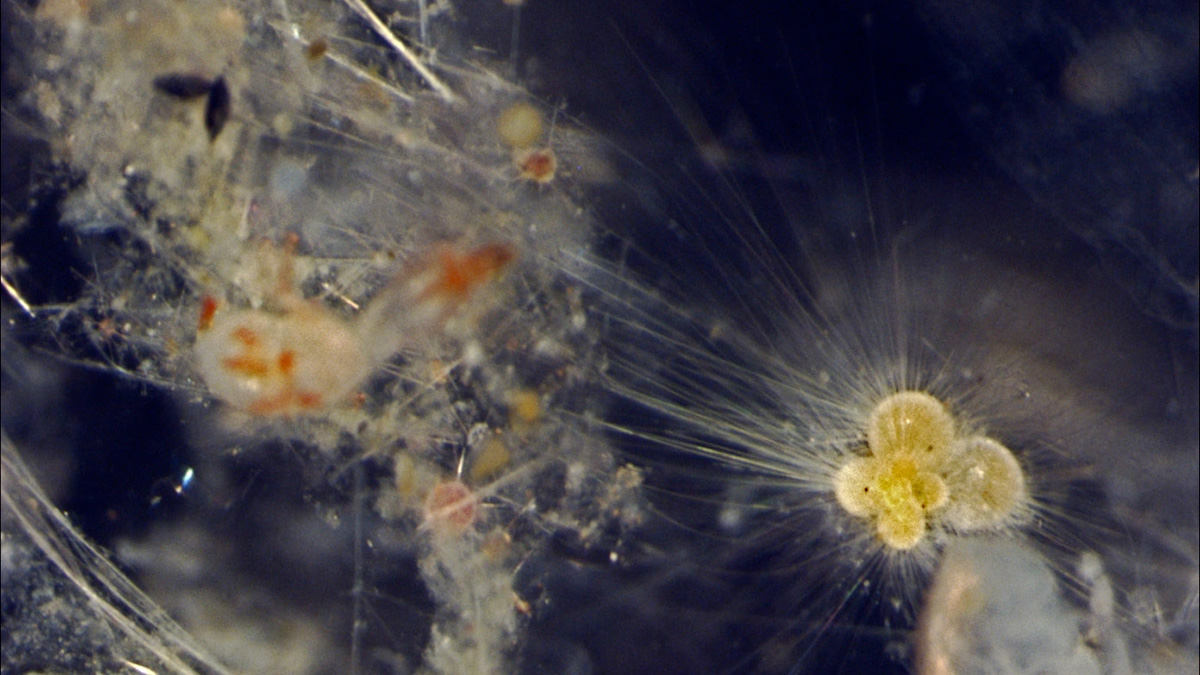In Earth’s tropical oceans, diverse plankton populations drift through open waters, forming the foundation of marine food chains. This diversity generally decreases toward the colder waters of the ice-capped poles. However, as climate change continues to reshape the world’s oceans and ice sheets, these vital organisms may head for higher latitudes, with larger marine life following in their wake, according to new research.
In a study published in Nature, scientists used the fossils of single-celled, shell-building plankton called foraminifera to explore how marine life has reshuffled in response to climate shifts. As Earth cooled during the past 8 million years, ice sheets formed at the poles, pushing planktonic foraminifera about 30° latitude toward the equator and establishing today’s diverse tropical groups, the fossil record shows.
Over the past 150 years, anthropogenic climate change has caused geologically rapid warming. And as global temperatures approach levels similar to those from 8 million years ago, planktonic foraminifera may evacuate hotter regions in the tropics and move poleward. The effects could cascade through both marine and terrestrial ecosystems, breaking down food chains, said Adam Woodhouse, a coauthor of the study and a micropaleontologist at the University of Texas Institute for Geophysics. The scenario is “totally gloom and doom,” he said.
Plankton Inform the Past, Present, and Future
Although they are only about the size of a grain of sand, planktonic foraminifera contain valuable scientific data. These marine creatures live in the upper part of the water column, producing shells typically made of calcium carbonate. When they die, their tiny shells sink to the ocean floor, accumulating over time and ultimately becoming microfossils that record past environments and climates.

To track the history of planktonic shifts across the world’s oceans, Woodhouse and his colleagues used a newly developed data set called Triton, which includes more than half a million records of fossil planktonic foraminifera—the largest data set ever created for a single fossil group and one of the most complete fossil records of any organism.
Planktonic foraminifera are particularly useful for reconstructing past environments because their shells preserve a record of their life history, physical traits, and species-specific ecological niches. These details have allowed scientists to develop an exceptionally refined understanding of how planktonic foraminifera have evolved using imaging methods like micro-CT (computerized tomography) scans, Woodhouse said.
Employing the extensive Triton record collection of foraminifera fossils, the researchers looked at how global marine plankton communities reorganized over the past 8 million years as Earth became a world of ice ages, helping to contextualize the potential impacts of modern climate change on marine life.
To investigate these biogeographic shifts, the researchers explored patterns across “ecogroups” and “morphogroups.” Ecogroups are based on the organisms’ ecological niches, such as their habitats, and morphogroups are based on their physical characteristics. The study revealed large-scale changes in the biodiversity patterns of planktonic foraminifera that couple with the development of polar ice sheets as the climate cooled.
Understanding the past and present movement patterns of planktonic foraminifera is important because in the modern ocean, their distribution correlates with that of many larger organisms like tuna, billfish, squid, and krill that people rely upon for sustenance and livelihood, Woodhouse explained.
The response of the foraminifera to modern climate change may therefore be useful for predicting the response of other organisms throughout various food webs.
Past Is Prologue
Though the present rate of climate change far exceeds those of the geologic past, the fossil record is still a useful analogue to understand the present when it is scaled by relative rates of change, said Nussaïbah Raja, a doctoral student in paleobiology at the University of Erlangen-Nuremberg who was not involved with the study.
“The issue with comparing modern day to 8 million years ago is humans have changed everything.”
Both past and present climatic circumstances involve transitioning from a normal to an extreme time, from a cool period to a warming one. By examining what happened in the past under these comparable conditions, scientists can generally anticipate similar patterns of movement and extinction, she said.
Predicting what will happen in the future from the fossil record is an extremely complex challenge, Woodhouse said. “The issue with comparing modern day to 8 million years ago is humans have changed everything,” he said. Human activity has affected the top and bottom of the marine food chain, marking a departure from how marine life has operated over the past 540 million years and how extinctions have occurred, he explained.
Biodiversity in a Warming Future
Though the ability to peer into the future is limited, the study’s observed range shifts among marine planktonic microorganisms in the recent and geological past suggest a significant poleward expansion of these communities in the future, even under the most conservative future global warming scenarios.
Scientists are already seeing evidence that plankton are moving in response to anthropogenic climate change over the past 150 years, Raja said. “I don’t think people realize how much we depend on the oceans and how much they are currently changing.”
As climate change continues to affect marine life, Woodhouse asserts the urgency of continued scientific investigations and the protection of the ocean. He said he is now preparing to take the next step in his research: discovering whether other organisms will soon follow the path of the plankton.
—Mackenzie White (@MackenzieMtn), Science Writer

